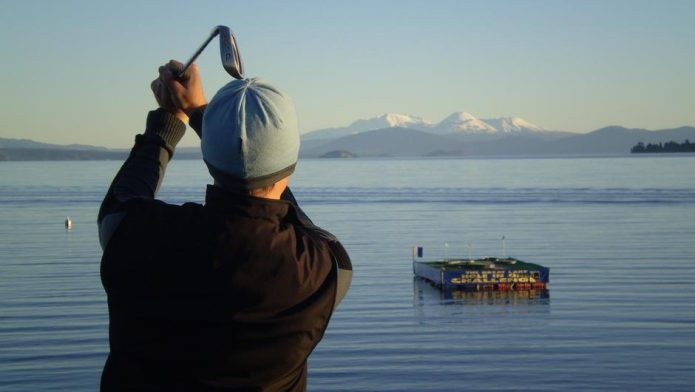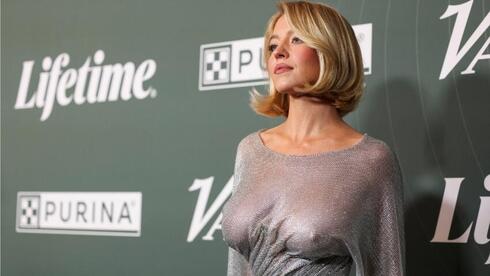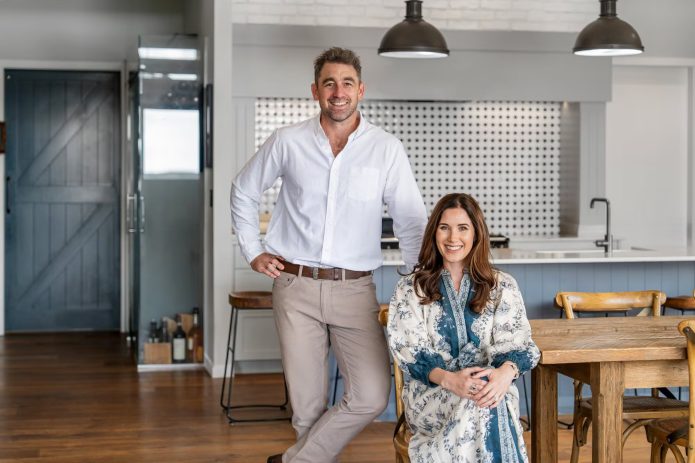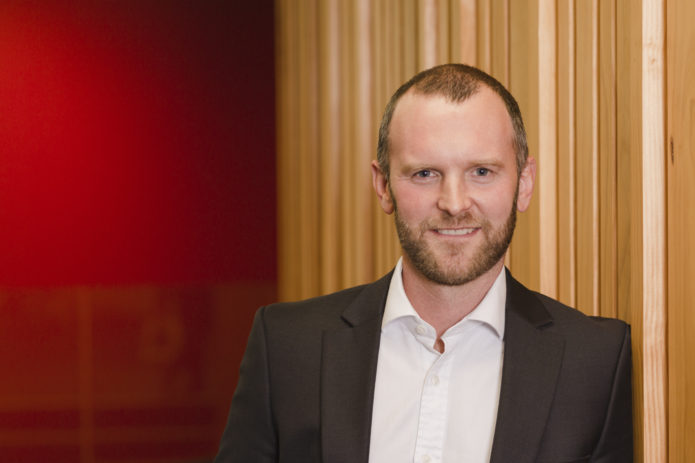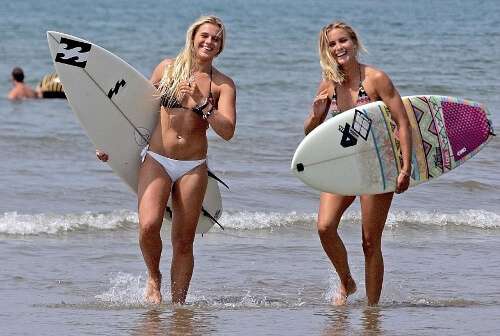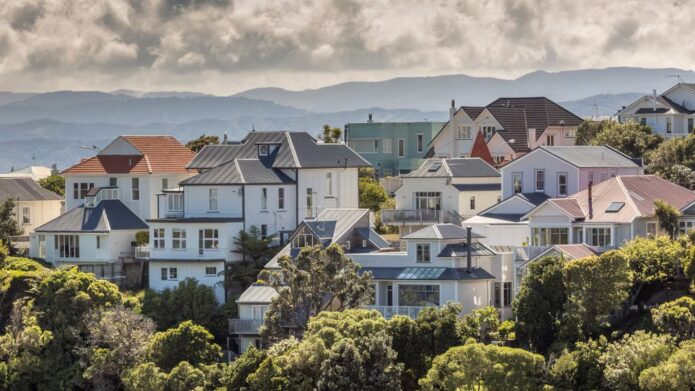PHOTO: Gina Rinehart. FILE
The tech duo were, for a few months in late 2021, the richest in the land as a soaring Atlassian share price and a falling iron ore price caused a switch at the top since last May’s Rich List. But the tech sector was later sold off and the iron ore price rebounded. Rinehart, the founder of Pilbara iron ore mine Roy Hill, has her grip firmly on first place with an estimated $34.02 billion fortune, up from $31.06 billion in 2021.
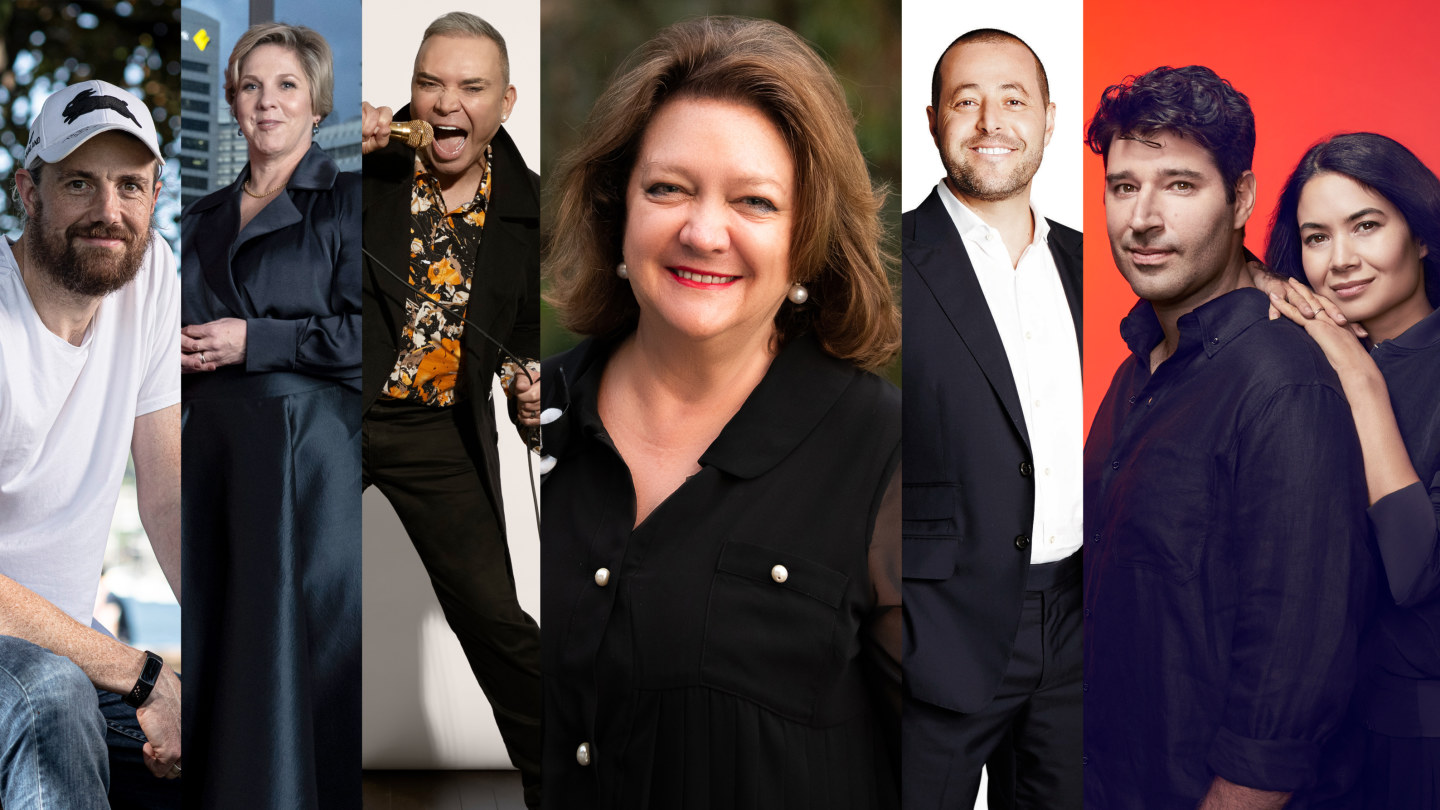
The strong iron ore price as at April, when we ruled off the Rich List, also kept Andrew Forrest ensconced in second spot at $30.72 billion, a figure that’s more than treble his wealth in 2019 when he sat in eighth spot with $7.99 billion.
Atlassian shares slumped more than 46 per cent from their peak in October last year but, as at April, they were still trading above where they were a year ago. That’s boosted Cannon-Brookes’ fortune to $27.83 billion, up from $20.18 billion. Farquhar sits in fourth spot with $26.41 billion, up from $20 billion.
It’s a similar story for another tech team. Canva founders Melanie Perkins, Cliff Obrecht and Cameron Adams collectively lost billions as a 17 per cent slide in the Nasdaq punished valuations, even for tech companies that are privately held.
Perkins and Obrecht, who are married, occupy eighth place with a combined wealth of $13.8 billion. That’s less than the $16.5 billion they achieved when the Young Rich List was published in October but still almost double the wealth they held on the 2021 Rich List.
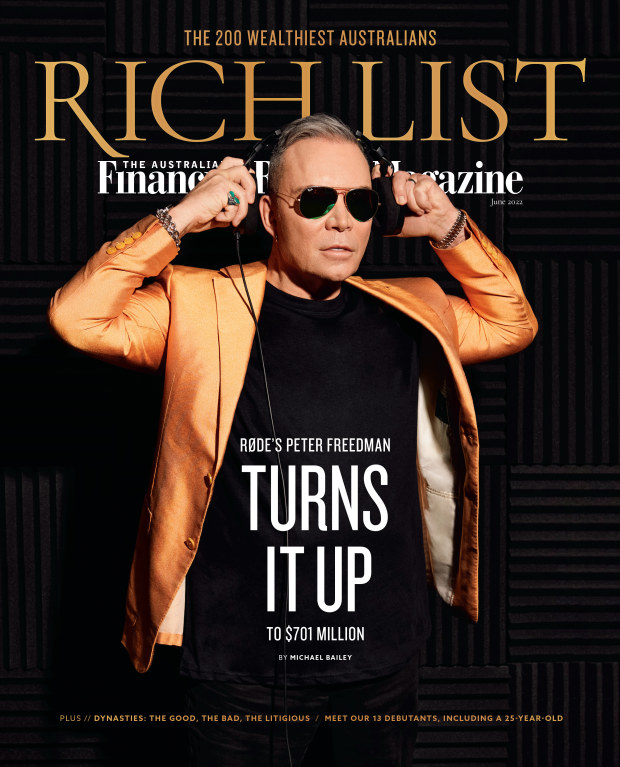
The fall pushes Adams below Kerry Stokes and into 12th position with a $6.9 billion paper fortune, albeit a figure more than treble a year ago, on a new understanding of how much equity he holds as Canva’s chief product officer.
Despite the sell-off, the 2022 Rich List marks a record year for wealth creation. The rise in iron ore, property and solid gains in manufacturing – and the fact that tech was still well up overall – has widened the gap between the top of the list and the rest.
To qualify for this year’s list, you needed at least $629 million. It’s a record cut-off point and almost double the $342 million needed to make it only five years ago.
There are 13 debutants on the Rich List, 37 women and four people who’ve returned. The returnees include Flight Centre founder Graham Turner. Travel is back and so is the Flight Centre share price which, combined with the Spicers Retreats business owned with wife Judy, lifts the couple’s wealth to $629 million as they sneak into 200th place after a two-year hiatus.
Yet as some make their way back, others tumble out in spectacular fashion. Last year, Larry Diamond was sitting on a $598 million treasure trove, riding high on a global expansion of his Zip Co. Now he is in the crosshairs of the market’s evisceration of the buy now, pay later sector.
Investors are racing for the exit as losses increase, fears mount for stricter global regulations to curb unscrupulous lending, and rising inflation stokes fears of more bad debts. Zip Co’s market cap has capitulated from about $6 billion a year ago to just $700 million, leaving Diamond with a far smaller fortune of about $70 million.
Australia’s biggest names in buy now, pay later, Nick Molnar and Anthony Eisen, managed to pass on the baton of woe to new owner Block, by selling their company in the country’s biggest M&A deal. But they were paid $2.7 billion in Block equity and, as such, about $1 billion has been wiped from their wealth, which falls more than 40 per cent to $1.52 billion each this year.
Rich List 2022
Out now: The definitive list of Australia’s wealthiest people, now in its 40th year.
Ruslan Kogan stays “a former Rich Lister” for a second year as supply chain problems and a cooling of the online shopping boom keep his kogan.com share price in the doldrums.
The volatility inherent with tech firms, whose founders tend to be the younger members of the list, is also borne out in the omission of Kain Warwick, who was marching strongly towards the Rich List gates when he featured on the cover of October’s Young Rich List.
At the time, his wealth was estimated at $879 million thanks to the value of tokens underpinning his Synthetix derivatives trading protocol. The value of the tokens has plunged, and Warwick’s wealth slides to about $470 million.
Other big names who had been expected to grace the pages were Cettire’s Dean Mintz, whose wealth has plunged – from $617 million in November to $232 million – in line with the falling share price for his online luxury retail group.
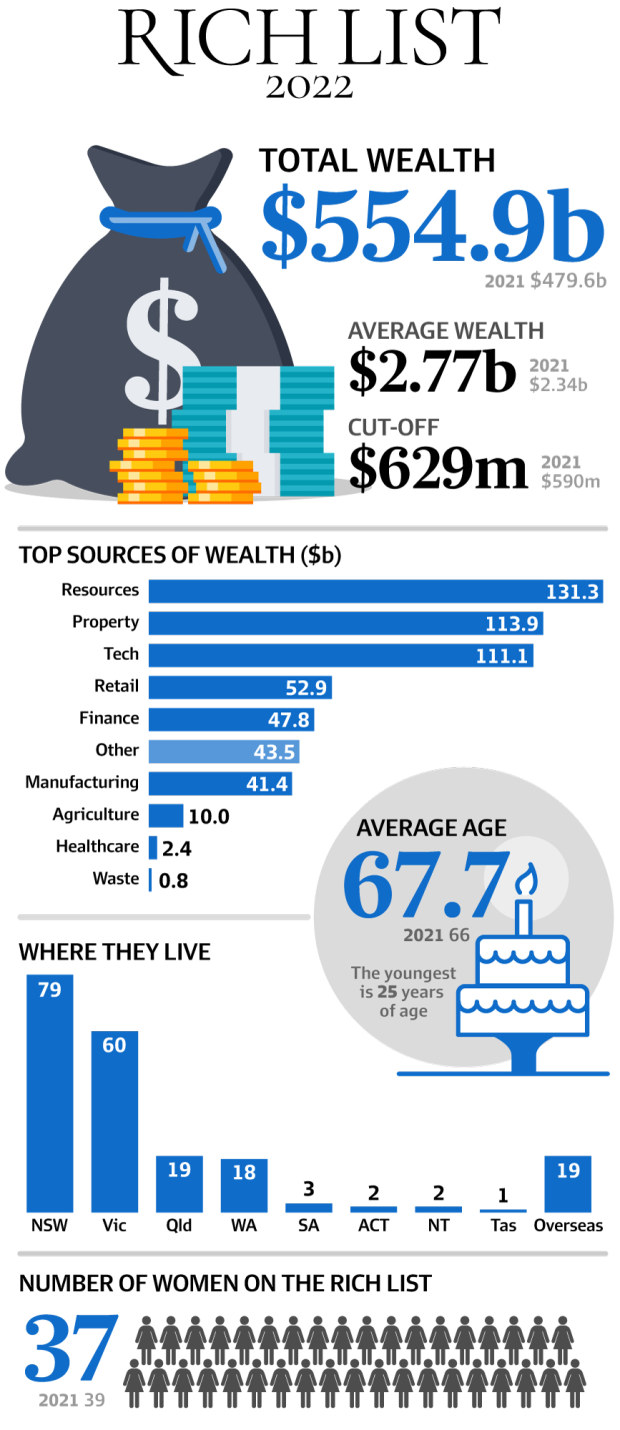
Queensland retail couple Tah-nee and Simon Beard fail to make the list after taking equity in US-listed AKA Brands as part of the second tranche of their sale of Culture Kings. The stock has slumped and their overall wealth tumbles to $430 million.
But it’s not a complete tech wreck. The more established players built wealth this year. WiseTech co-founder Richard White managed an exquisitely timed equity sell-down by offloading a parcel of shares just as they raced to a record $60.
The software group’s shares have since eased but remain about 40 per cent higher than a year ago, lifting White’s wealth by $1.6 billion to $6.33 billion. Major investor and chairman Charles Gibbon becomes a billionaire for the first time while fellow investor and WiseTech director Michael Gregg debuts with an estimated wealth of $648 million.
The tech sector also delivers the list its youngest-ever member in 25-year-old Robert Ferguson who, alongside his 30-year-old brother James at No. 134, created crypto platform Immutable in 2018. This year it became Australia’s third most valuable privately held tech company, attracting investment from Singapore’s Temasek and China’s Tencent.
READ MORE VIA AFR

